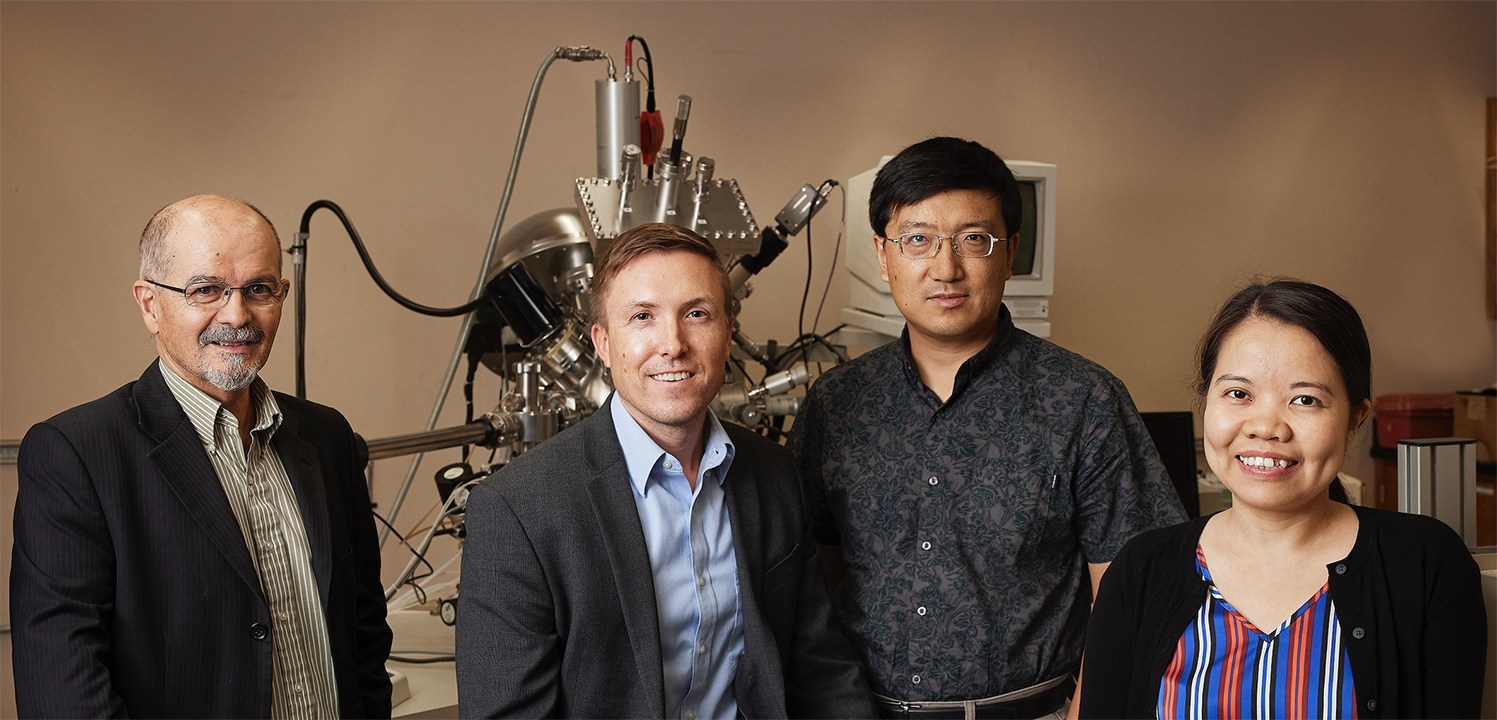University of Oklahoma, Iowa State Receive $4 Million Federal Grant for Clean Hydrogen Research
Published by Todd Bush on September 20, 2022
What if we could bring together Oklahoma's abundant natural resources, like methane, with Iowa's renewable biomass to create a better way to produce hydrogen energy?
NORMAN, Okla., Sept. 15, 2022 /PRNewswire/ -- That question is the subject of a new study being explored by researchers at the University of Oklahoma and Iowa State University. The four-year, $4 million project is funded by the National Science Foundation and will also investigate the potential byproducts and related applications of solid carbon that might result from effectively generating carbon neutral or carbon negative hydrogen energy. The study is led by Steven Crossley, the Sam A. Wilson Professor in the School of Chemical, Biological and Materials Engineering, Gallogly College of Engineering, and an energy research fellow at the OU Institute for Resilient Environmental and Energy Systems.

There has been a great deal of excitement in the climate science world around hydrogen-based energy as an alternative to directly combusting fossil fuel-based sources for energy. The goal of hydrogen-energy research is to produce it cheaply, without greenhouse gas emissions and at scale from either water or hydrogen-rich organic compounds. However, there are several methods by which this conversion can take place which all come with their own benefits and costs.
Hydrogen production by pyrolysis – breaking apart natural gas into hydrogen and solid carbon – is a particularly enticing science and engineering goal, as this method produces H2 with a low carbon emission intensity footprint and has an additional benefit of creating solid carbon byproducts, with potentially high market value of their own.
"If you were to meet a significant fraction of our energy needs by producing H2 and solid carbon, that would create a huge quantity of excess solid carbon," Crossley said. "What do we do with all this carbon? How do we gain value from it? How do we benefit society? In lieu of creating new mountains and islands of solid carbon, what can we actually do?"
Currently, performance carbon materials such as carbon fibers and nanotubes are expensive to produce and so have been relegated to high-end or niche applications like making lighter cars, drones or advanced composite materials.
"Now we're talking about creating a byproduct from the energy that changes everything," Crossley said. "That means that we need to find all ways that we can use carbons and tweak them such that they benefit society in a variety of ways and we're not wasting the valuable resources that we put into the process."
They're studying many different applications, like soil amendments to sequester long-lived carbon in the environment and help crops grow and evaluating their use as water filtration systems to help clean water.
"We are investigating ways to make advanced pavements and asphalts, materials for batteries and fuel cells, and other next-generation technologies that possibly wouldn't have made sense unless this was a byproduct from the energy industry," he added.
Learn more at https://bit.ly/OU-RII
SOURCE University of Oklahoma
Subscribe to the newsletter
Daily decarbonization data and news delivered to your inbox
Follow the money flow of climate, technology, and energy investments to uncover new opportunities and jobs.
Latest issues
-
The $9B Deal That Almost Didn't Happen
Inside This Issue 💰 The $9B Deal That Almost Didn't Happen ⚖️ IMO Rules Understate Benefits of Utilising Captured Carbon, Says GCMD 🌾 Corteva and bp Launch Biofuel Feedstock Joint Venture Etlas 🔬 ...
-
Nebraska's 3-Plant Ethanol CCS Gamble Pays Off Big
Inside This Issue 🌽 Nebraska's 3-Plant Ethanol CCS Gamble Pays Off Big 🧊 New Evaporative Crystallizer Design Accelerates Direct-Air Carbon Capture ✈️ From SAF to Solar: DHL’s Bold Steps Toward Net...
-
SAF Output Doubled, So Why Is IATA Sounding Alarms?
Happy New Year from Decarbonfuse! As we wrap up 2025, we want to thank you for being part of the growing Decarbonfuse community. Your engagement and feedback have helped make this platform a trust...
Company Announcements
-
CES 2026 - Doosan Presents Comprehensive Energy Solutions for the AI Era
Doosan Group, through its energy subsidiaries Doosan Enerbility and HyAxiom, will unveil a portfolio of next-generation energy solutions designed to meet the massive power demands of the AI era. Th...
-
From Thin Air to Fighter Jets: A New American Way to Make Carbon Fiber
Mars Materials, Inc. and North Carolina State University successfully validated a CO2-derived precursor for carbon fiber manufacturing. Mars Materials, Inc. PBC ("MM" or the "Company"), a public b...
-
Greentown Labs Announces Go Make 2026 With Shell and Technip Energies
Greentown Labs, the world's largest climatetech and energy incubator, announced Greentown Go Make 2026, an open-innovation program with Shell Catalysts & Technologies and Technip Energies focus...
-
SoCalGas Connects Its First Landfill-Based Renewable Natural Gas Project to Its Pipeline System
Southern California Gas Company (SoCalGas) is now accepting renewable natural gas (RNG) produced at the new WM Simi Valley RNG Facility into its pipeline system, marking the first time SoCalGas has...